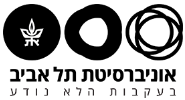31/12/15
You are invited to attend a lecture
By
Micha Feigin-Almon
MIT Media Lab
MIT Institute for medical engineering and science (IMES)
Time resolved computational imaging - from time-of-flight cameras to ultrasound tomography
Understanding the data formation models can allow us to extract meaningful scene information as well as correct for mistaken assumptions. In this talk I will look at two such cases, dealing with multi path interference and calibration issues with time-of-flight (ToF) cameras and sound speed recovery in ultrasound imaging.
Amplitude modulated continuous wave (AMCW) ToF range cameras operate by illuminating the scene with an amplitude modulated sinusoidal signal. Range is recovered by measuring the phase shift of the reflected signal, similar to a Michelson spectrograph. These types of cameras are sensitive to errors due to inter reflections in the scene (so called multi path) as well as errors in the illumination model. Using the non-linearity in the model along with frequency diversity, it is possible to deal with both these issues.
Similar to ToF, ultrasound imaging measures distance by measuring travel time. However, unlike the assumption of constant velocity of light when imaging in free space, the constant velocity assumption of sound fails when imaging inhomogeneous media such as the human body. Knowing background sound velocity is not only essential for being able to image by allowing focusing, research has shown that it also carries meaningful diagnostic information. Using synthetic aperture data, background scatterers along with scattering models allows us to correct for these errors and recover background sound velocity.
Thursday, December 31, 2015, at 15:00
Room 011, Kitot building

